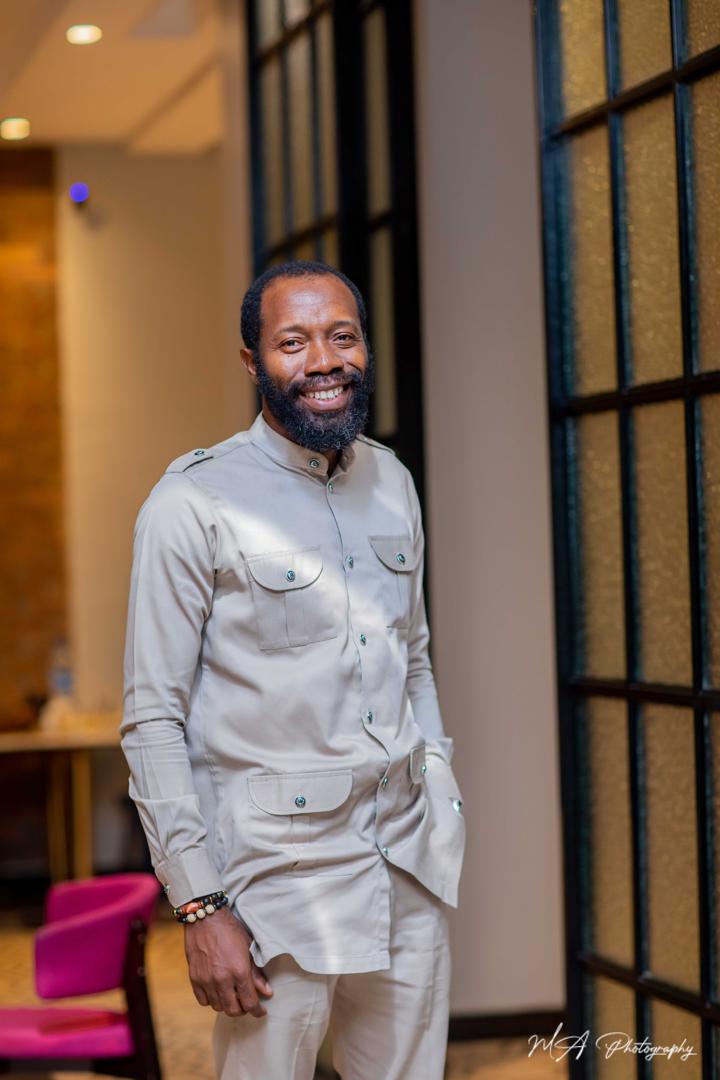
Abiodun Folawiyo, CEO of Shoespeeds, is Turning Textile Waste into Trendy Footwear.
In today’s world, where sustainability is becoming more crucial than ever, one brand has taken the initiative to reshape the fashion industry. Abiodun Folawiyo, the visionary CEO of Shoespeeds, is creatively transforming textile waste into stylish shoes, and making waves in the fight against waste and environmental degradation.
What began as an entrepreneurial pursuit in 2005 while studying at the University of Lagos has blossomed into a brand that not only focuses on profit but also seeks to revolutionize the footwear industry. Inspired by a simple pair of worn-out jeans, Abiodun’s journey began with a desire to turn textile waste into something both functional and stylish.
In this interview, we had a conversation with the visionary founder of Shoespeeds to explore the journey behind the brand, the process of creating sustainable footwear, and the challenges and triumphs along the way.
1. Can you tell us the story behind Shoespeeds-what inspired the idea of turning textile waste into footwear?
Shoespeeds was born in 2005 when I was an undergraduate at the University of Lagos, alongside my best friend, Dr. Oladapo Oduba. The initial idea was to create a business that could generate wealth early while also revolutionizing the leather industry, which I saw as one of the most resource-intensive sectors. The real turning point for Shoespeeds, however, came from a personal experience. I received a pair of denim jeans from my elder sister as a gift, and over time, as I wore them, they became worn out, faded, and started to tear. I had an emotional attachment to those jeans because of the love and effort my sister put into picking them out for me. I couldn’t bear to throw them away, nor could I use them as rags, considering the value they once had. That’s when the idea struck-why not turn them into something new? I transformed the denim into sandals and a portable bag, which I was able to sell for more than the original cost of the jeans. This experience sparked my passion for reimagining waste and using it creatively in fashion.
2. What types of textile waste do you work with, and how do you source these materials?
At Shoespeeds, we primarily work with denim, velvet, chinos, and khakis. These are some of the most common textile wastes we find and repurpose into footwear. We source these materials from a variety of places-many of our friends in the fashion and textile industry help us by donating fabric waste, and we also buy leftover fabrics from sellers who deal in offcuts or surplus textiles. By giving these materials a second life, we reduce the amount of waste that would otherwise be sent to landfills and contribute to pollution.
3. Walk us through the process: how does textile waste become a finished pair of Shoespeeds shoes?
The process of turning textile waste into footwear is both an art and a science. We start by selecting fabrics based on their texture, color, blend, and purpose. Each material has its own unique qualities, and we ensure it aligns with the type of shoe we aim to create. For instance, some materials might be better suited for durable, sturdy shoes, while others are more appropriate for softer, more flexible styles. Once we’ve selected the fabric, we cut the patterns for the shoes, stitch the pieces together, and then carefully last and finish the shoe. The finishing touches are what truly bring the shoes to life, from adding soles and other necessary components to making sure they are comfortable, stylish, and ready for wear.
4. What challenges have you faced in producing sustainable shoes, and how have you overcome them?
One of the main challenges in producing sustainable shoes is that some of the materials and styles don’t always fit seamlessly into the everyday fashion of many customers. For example, certain textile wastes may have unusual textures or colors that don’t match typical fashion trends. To overcome this, we blend these materials with high-quality leather to create a balanced, fashionable look that still maintains the eco-conscious foundation of the shoes. This combination helps us meet the needs of consumers looking for both style and sustainability, creating shoes that are wearable and trendy, while still reducing waste.
5. How do you ensure the durability and comfort of shoes made from recycled materials?
Ensuring that our shoes are both durable and comfortable is a key focus for us. We carefully choose recycled materials that have the right strength and longevity. Additionally, we complement these materials with specialized inserts and soft inlays to ensure comfort. For example, we use high-quality but lightweight soles that provide good support and cushioning for the feet. This combination of recycled textiles and carefully selected components allows us to create shoes that are not only environmentally friendly but also comfortable for everyday wear.
6. How has the community responded to your eco-conscious approach to footwear?
While a lot of people still don’t fully understand the importance of using recyclable materials in fashion, there has been a positive response to our products, especially in terms of creativity, comfort, and durability. Many of our customers are drawn to the uniqueness of our designs, as they are unlike anything they would find in traditional shoe stores. Once people experience the comfort and quality of Shoespeeds footwear, they begin to see the value in supporting eco-friendly brands. However, we still have a lot of work to do in raising awareness about the environmental benefits of using recycled materials in fashion.
7. In what ways does Shoespeeds contribute to environmental sustainability and waste reduction in Lagos (or your local area)?
Shoespeeds plays a significant role in waste reduction by actively participating in discussions and programs that promote sustainability in fashion. We are committed to reducing the amount of textile waste in Lagos by collecting and repurposing materials that would otherwise be discarded. Through our operations, we create products that help keep waste out of landfills and reduce the environmental impact of fast fashion. Additionally, we encourage others to think more critically about their consumption habits and the lifecycle of the products they use.
8. Are there any social initiatives or employment opportunities Shoespeeds is creating through its operations?
At this stage, Shoespeeds has not yet launched any formal social initiatives or employment programs, but we are actively exploring opportunities to expand. As our brand grows, we aim to create more jobs and provide training for individuals, particularly in underserved communities, to equip them with the skills needed to work in sustainable fashion. We are passionate about empowering people through employment and education, and we see this as an essential part of our vision for the future.
9. What’s your vision for the future of sustainable fashion, and where does Shoespeeds fit into that picture?
Looking forward, I envision a world where recycling and sustainable practices are the norm in fashion, not the exception. I see Shoespeeds being at the forefront of that movement, educating consumers and businesses alike about the importance of recycling and how we can reduce the negative impact of textile waste on the environment. We aim to expand our product lines to include more items made exclusively from recyclable materials, creating a wider range of sustainable options for consumers.
10. How can individuals support your mission or get involved in promoting circular fashion through Shoespeeds?
Individuals can support our mission by donating old jeans, aso oke, and other fabrics they no longer use. These materials will be repurposed into new, sustainable products. Additionally, people can help spread the word about the importance of recycling and supporting businesses that use recycled materials. By promoting products made from sustainable materials and encouraging others to do the same, they can play a key role in driving the circular fashion movement forward.


